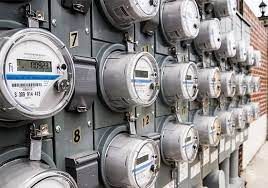The Federal Government has abandoned the Clean Energy Target in favour of a National Energy Guarantee, which requires retailers to use a percentage of electricity from ‘dispatchable sources’ such as coal and gas, batteries or pumped hydro. Subsidies and incentives for renewable energy sources are expected to be scrapped from 2020.
The Australian Government announced the proposal to improve the reliability and emissions intensity of electricity in Australia, after deciding against adopting the Clean Energy Target recommended by chief scientist Alan Finkel.
SMH reported that the Turnbull government’s new National Energy Guarantee could introduce a de-facto carbon price, measuring the cost of emissions for the first time since the Abbott government scrapped the carbon tax in 2014.
The long-awaited energy plan, released by the government on Tuesday, requires electricity retailers to ensure improved reliability levels while also reducing carbon emissions in line with Australia’s Paris Agreement commitments.
What does the National Energy Guarantee entail?
The proposed National Energy Guarantee (NEG) consists of two obligations that are placed on electricity retailers and any large energy users that buy their electricity directly from the wholesale market.
These obligations are:
- A reliability guarantee that aims to boost the reliability of the electricity market; and
- An emissions guarantee that aims to reduce the emissions intensity of electricity supply.
Reliability Guarantee
Retailers (and some large energy users) will be obliged to have contracts in place to supply enough ‘dispatchable capacity’ to meet a specified proportion of their peak load.
The term ‘dispatchable capacity’ effectively refers to electricity that comes from “non-intermittent” sources, such as coal, gas and hydro generators, batteries and demand-response. Retailers will not actually have to deploy this capacity, they just need to have it available in the event that intermittent sources of generation do not provide enough capacity.
Essentially, the reliability guarantee means that every megawatt of intermittent electricity (e.g. solar, wind farms etc) will be offset with a megawatt of reliable electricity. Failure to do so will lead to the imposition of fines or, in the worst-case scenario, cancellation of the licence to operate.
The Energy Efficiency Council believes that while this proposal will reduce some of the theoretical reliability issues that could emerge with higher penetrations of renewable energy, it will not address all reliability issues.
It is notable that this mechanism would not have prevented the recent black-out and load-shedding incidents in South Australia and NSW, which were caused by a combination of storm-damage, settings on the protection systems for wind-farms and ‘dispatchable’ gas and coal-fired generators not functioning.
– Rob Murray-Leach, Head of Policy EEC
Emissions Guarantee
Retailers (and some large energy users) will be obliged to deliver (or use) electricity that has an overall emissions intensity below a specified level. In practice, this means that a retailer could source electricity from a wide range of sources, including coal-fired generators, gas-fired generators and windfarms, as long as the overall emission intensity of supply is below the threshold.
In practice, this would operate similarly to an Emissions Intensity Scheme (EIS). This is not a new concept – the keynote speaker at the 2011 National Energy Efficiency Conference, Dr Richard Cowart from the Regulatory Assistance Project, discussed this proposal at some length while he was in Australia, and EIS was floated as part of the Finkel Review’s preliminary report in 2016.
While the NEG won’t directly provide subsidies for renewable energy, retailers will effectively be required to source a proportion of their energy supply from low-emission generators, which will increase the value of low-emissions generation. The size of this uplift will entirely depend on the emissions intensity target.
Buried in the detail of advice presented by the new Energy Security Board to state and federal governments is a mechanism to be added to the National Electricity Market in two stages in 2019 and 2020 that could produce a default carbon price.
Some electricity retailers will not be able to meet the required emissions profile, while others will overachieve…Therefore a secondary exchange will occur between retailers to balance their portfolios.
Will the National Energy Guarantee be effective?
The effectiveness of the National Energy Guarantee (NEG) will depend on the details, and very few details have been released so far. The figures about price impacts that have been released are based on basic calculations, and the Government has indicated that more modeling would be undertaken.
With few details of the system yet available – the mandated level of dispatchable energy, the trajectory required of retailers to meet missions targets, and penalties for companies that fail to meet the terms of the NEG – and no modelling yet done on how the government’s prediction that savings for householders of $110 – $115 per year by 2030 might be achieved, the policy still has a long way to go.
The role that the NEG plays in meeting Australia’s carbon commitments will depend on the level of the Emissions Guarantee. The Government has indicated it expects the Emissions Guarantee to result in 28-36 per cent renewable energy by 2030. If this was the case, Australia would almost certainly fail to meet its commitment to reduce overall emissions by 26-28 per cent by 2030. CSIRO modelling suggests that Australia’s generation needs to be around 52-70 per cent renewable by 2030 to meet its international greenhouse targets.
Impacts of NEG on the energy management industry
The Reliability Guarantee, if it’s implemented, could have a positive impact on the market for demand-response. However, that will depend on whether demand response is fully qualified as ‘dispatchable capacity’.
The Reliability Guarantee could have other impacts on energy management depending on the details of the NEG.
The Emissions Guarantee will not directly drive energy efficiency. The Emissions Guarantee reduces the emissions intensity of energy supply (tonnes of CO2 equivalent per MWh), but won’t affect the amount of energy used.
This means that if the government doesn’t undertake aggressive action on energy efficiency, the Emissions Guarantee will need to be much higher to meet Australia’s international greenhouse targets. Returning to the CSIRO’s modeling, if the government takes aggressive action on energy efficiency, electricity supply will need to be 52 per cent renewable by 2030. If it only aims to meet its current target to improve energy productivity by 40 per cent by 2030, electricity supply will need to be 70 per cent renewable by 2030.
This raises complex issues for the Emissions Guarantee. To provide the energy sector with investment certainty, the Government will need to provide some clarity about the future trajectory of permitted emissions intensity. In order to determine emissions intensity trajectories, the Government will need to have an idea of how much abatement it wants to get from the Emissions Guarantee and how much from other sources, which means that you need to know the future level of energy efficiency of the economy.
This means that, if the Government is able to legislate the NEG, it will also have to firm up its energy efficiency target to ensure that it meets its international emissions targets. In other words, a NEG could force the Government to become much more explicit about how much energy efficiency its going to deliver, and the mechanisms that its going to use to drive investment in energy efficiency.
Meanwhile, industry is still grappling with high energy prices and reliability issues. Irrespective of federal or state government policy, large energy users are encouraged to continue taking effective measures to reduce energy consumption and emissions (through energy efficiency upgrades) as well as their dependency on the grid (onsite or distributed generation from renewable sources). This will benefit both the environment and the organisation’s ‘bottom line’. In other words, large energy users should take direct action with such efficiency projects as it helps mitigate energy pricing and energy supply risks. This means that regardless of the outcome of the National Energy Guarantee, organisations would be sure to benefit directly from their very own”Local Energy Guarantee”.
Click to learn more about how Ecosave can help your organisation save money and save resources, particularly through performance based energy savings projects.
Request a FREE 30 Minute Consultation with an energy efficiency specialist today!




